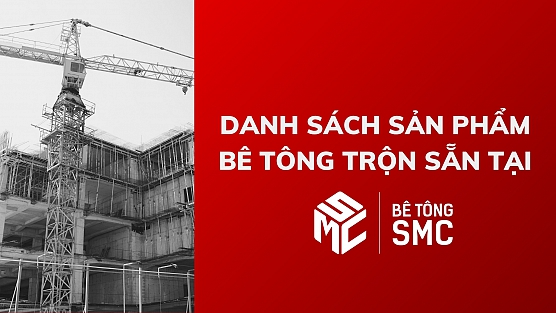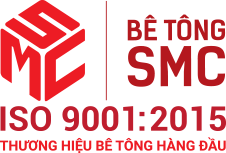Frequently asked Questions
Concrete engineering advice
Business contact
Avoid cracks when casting concrete
By following a few simple steps before and after pouring fresh concrete, you will achieve a beautiful concrete structure that requires very little maintenance, minimizing cracks in concrete.Concrete basically consists of cement , stone, sand and water. When fresh concrete in the plastic stage is fresh concrete in flexible form. As the concrete becomes hardened, the cement mortar starts to shrink, and the small intensity value obtained when the concrete is still young cannot resist the stresses created by this shrinkage.
If fresh concrete is poured on a windy day, the surface may start to set before it sets to the bottom, which will cause the concrete to shrink irregularly (plastic shrinkage cracks). Also, if the ground below the concrete is uneven, there will be an uneven traction during the shrinkage, which also causes stresses that adversely affect the new concrete. So how did you get concrete without any cracks?
Before pouring concrete
Make sure the foundation (soil below the concrete) is compacted and leveled completely. The best thing to do is to use a garden tiller, cultivate the soil to a depth of 6 inches, then hire a manual compactor and compact the soil firmly.
This will help ensure that weak baselines do not appear. A layer of cushioning sand can be applied if desired, this layer of sand will help achieve a completely flat surface and create constant friction for shrinkage concrete. 4 inches of washed sand is enough to spread the cushion.
If steel wire mesh is used as reinforcement, it is recommended to use flat mesh, not wire mesh. Rolled wire mesh is extremely difficult to hold in the upper half of the concrete, where the wire mesh needs to be positioned to work.
Reinforced bars can also be used connected by steel wires, but the distance and size requirements vary depending on the load and soil conditions, as it is difficult to recommend standards set forth for that. If reinforcing rods are used, it is necessary to hold the reinforcing bars on the upper half of the concrete; Stone, broken bricks may be used or plastic cushions on which steel will be placed can be purchased to hold in proper position when placing concrete.
Or you can ask the fresh concrete company to supply the fibers for the pouring mixture. These fibers are usually nylon or polypropylene fibers, which help to minimize cracks in concrete at the micro level instead of at the macro level (where visible to the naked eye cracks). Reinforcing steel also helps to control cracks, but if cracks appear, then steel, when properly placed into concrete, holds the concrete together, while the fibers do not.
When fresh concrete, if there is no vapor insulation, wet the foundation without stirring water so that the water in fresh concrete will not be absorbed by the dry nail, which will cause irregular dryness and Bad cracks due to plastic shrinkage.

As soon as fresh concrete is finished
Concrete should be protected from strong winds and not exposed to direct sunlight as the concrete will dry evenly from top to bottom.
To prevent significant cracking, expansion joints are an important factor in preventing cracking. By making expansion joints at least a quarter of the thickness of the concrete and joints separated by approximately 25 to 30 times the thickness of the concrete (it is usually easier to use a trowel or construction tools while the concrete is still fresh), will almost ensure no cracks appear in concrete.
If the floor is 4 inches thick, the expansion joints must have a depth of at least 1 inch and be spaced every 100 - 120 inches per slot. If it is not possible to use construction tools to place expansion joints, a concrete sawmill contractor may be hired to create expansion joints with a depth of at least ¼ of the floor thickness. This bonding method will help concrete crack at the weakest point. This is why expansion joints of sufficient depth are important. Changes at the foundation elevations may cause greater stress in the concrete where the expansion joint has not reached sufficient depth, and the concrete will crack outside the expansion joint.
As soon as the expansion joints are in place, and the concrete is cured for about two weeks, seal these expansion joints to prevent water from entering the foundation and causing expansion, or penetration. enter the expansion joints and cause freezing there, causing the water to expand and break the concrete around the expansion joints.
Other news
Currently, ready-mix concrete is a top choice for many construction projects—both large and small—thanks to its convenience, consistent quality, and high construction efficiency. With extensive experience supplying commercial concrete for numerous key projects in the Southern region, SMC proudly offers a diverse range of ready-mix concrete products to meet the technical requirements of every type of construction.
A Comprehensive Guide to Concrete Specs – Everything You Need to Know
A Complete Guide to Concrete Specs – a set of technical parameters including concrete grade, slump, compressive strength, aggregate size, and mix ratio. This article helps you understand how to define, apply, and control concrete quality according to TCVN standards and practical construction conditions.
How to check the concrete slump
In construction and civil engineering, concrete slump test (or simple slump test) is the work performed at the construction site or in the laboratory that usually determines and measures the hardness, consistency of samples. Concrete before pouring concrete or casting maintenance, research or experiment samples.




